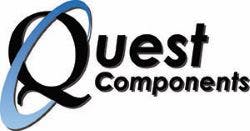A resilient bunch that’s usually ready for anything that gets thrown at it, the procurement sector grappled with a high degree of challenges in 2021. Just as economies and manufacturing centers worldwide began to gear back up after a difficult 2020, everything from port congestion to container shortages to labor constraints seemed to stand in the way of a good source of supply. From semiconductors to components to basic ingredients like resin, nearly all corners of the supply chain were hit with shortages at one time or another in 2021.
With this and other trends expected to continue at least into the first couple of quarters of 2022, now is a great time for buyers to start preparing for what’s ahead by reassessing their forecasts, securing stock on critical items and making other year-end moves to ensure a good start to the new year. Here are four things buyers can do now to make this happen:
- Brace for more challenges ahead. The pandemic-driven supply chain challenges—and particularly those impacting semiconductors—are expected to last well into 2022. This is pushing many companies to rethink their supply chain strategies. “Even before the pandemic hit there was tightening that was going on,” Marvell’s Matt Murphy told CNBC. “The chip companies actually have to take a different view now of supply entry, it’s a strategic imperative in terms of how you plan your capacity and your relationships with your suppliers.” For example, there is more willingness from buyers to pay for capacity in advance or to sign up for take-or-pay agreements—two trends that will likely continue in the new year. “We’re viewing this as a strategic shift to capacity being strategic, [and] not just an afterthought,” Murphy added.
- Think beyond price. The strong relationships you establish with suppliers shouldn’t be based on price alone, and particularly in an era where factors like availability, delivery times and reliability rank among the most important metrics to base buying decisions on. Focus on establishing mutual trust and loyalty; keeping suppliers informed about your plans, strategies and changes; and syncing up with your key vendors on a regular basis now and into 2022.
- Prepare for long order lead times. Raw material shortages are occurring in many different sectors, including rubber, plastics, electrical equipment, motor vehicles, wood, computers and electronics. Industrial metals are in particularly high demand and short supply right now, with no immediate relief in sight. According to the Institute for Supply Management, lead times for production materials rose from 85 days in May to 88 days in June—the highest figure recorded since ISM began collecting data in 1987. Lead time for maintenance, repair and operating supplies increased from 42 to 45 days during the same period. The situation isn’t likely to reverse itself anytime soon, which means now is a good time to lengthen out those forecasts, collaborate with suppliers and plan out your company’s needs well in advance.
- Stay in the know. Don’t wait for the news to come to you; get proactive and educate yourself on what’s going on both in your respective markets and on a broader scale. According to the recent Source Today report on procurement salary and career trends {Insert URL for the appropriate Salary Survey installment}, 64.1% of respondents read or comment on articles; 51.28% download white papers, data sheets or other notes; and 51.28% view webcasts. Nearly 49% say they watch videos, 41.88% browse websites on mobile devices and 39.32% attend online trade shows or conventions. Other professionals read or comment on blogs (29.04%), interact with social media sites (26.5%), and download apps on mobile devices (18.8%).
With 2022 right around the corner, now is a good time to start making some or all of these moves in preparation for what’s to come. Buyers who think proactively, create accurate forecasts and align with reliable suppliers will be particularly well-positioned for success during periods of uncertainty.







